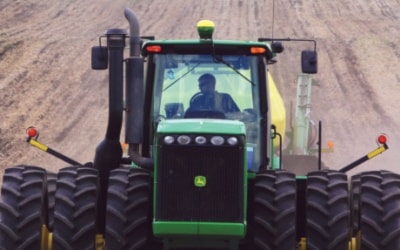CHARLES TWEED/Ponoka News
The Ponoka Food Grains Project was hard at work on May 20 making sure a good crop of wheat is seeded just south of town.
The Ponoka project that works with Canadian Foodgrains Bank is a partnership of churches and church-based groups that work to put an end to hunger in developing countries around the world.
Ponoka Food Grains Project has rented 170 acres for the last 14 years, planting a variety of crops to be used to end world hunger.
This year, farmers, CPS, and Ponoka Fertilizer banded together to ensure the land received the fertilizer it needed after an agronomist tested the soil. John Deere dealership Agro Ponoka donated the equipment and expertise in the form of operator Brad Remyn to make sure the crop was seeded evenly and efficiently, and the wheat came from Simco Seeds.
Food Grains doesn’t use the wheat directly to help end world hunger but instead the proceeds from the sale of the crop.
“We always sell the crop and the cash goes to our Winnipeg office. From there, they decide where the money will go. They decide where the most need is,” said Ponoka Food Grains Project member Larry Henderson.
The group chooses to use dollars instead of the crop for a variety of reasons.
“We do ship some wheat, peas and food overseas but they try to buy food close to where it is going to end up to cut down on the cost of shipping and to support local producers and help support their agricultural industry,” added Henderson.
In March, Ponoka Food Grains Project teamed up with Canada Foodgrains Bank to hold its annual cattle sale. The event raised more than $73,000, most of which was donated by producers from central Alberta.
In the fall, Henderson said the group plans to host a party to harvest the field. He said they usually have a turnout close to 200 people and farmers all chip in to get the crop off.
“Last year I think we had 14 combines working on the field and it took about two hours to get everything finished,” said Henderson. “We have a lot of good local support for the program.”
